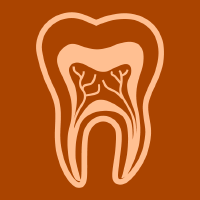Topic Menu
► Topic MenuTopic Editors

Oral Health Management for Children, Adolescents, and Adults, 2nd Volume

Topic Information
Dear Colleagues,
This is the expanded second edition of the Topic: Oral Health Management for Children, Adolescents, and Adults that 1st edition was resulted in publishing of 35 papers.
The Sustainable Development Goals (SDGs) are focused on preserving the global environment and creating an equitable human society. All countries and stakeholders, acting in collaborative partnership, will work toward the SDGs. Dentistry will unexceptionally contribute to one of the SDGs, “Ensure healthy lives and promote well-being for all at all ages”.
As is well known, oral health can contribute to wellbeing and quality of life. Oral health and oral diseases are closely associated with systemic conditions and diseases. Thus, it is very important for all people to manage oral health and prevent oral diseases, such as dental caries, periodontal diseases, oral cancer, eating disorders, oral malodor, malocclusion, oral dysfunction, temporomandibular disorders, bruxism, etc. In particular, the prevention of oral diseases at an earlier age is quite challenging but is essential for future life.
Hence, this Special Issue will focus on oral health management for children, adolescents, and adults. New research articles, reviews, and case reports are welcome. Articles dealing with new approaches to prevent oral diseases and with risk assessment and education are also welcome. Other accepted manuscript types include methodological papers, position papers, and brief reports.
Dr. Daisuke Ekuni
Dr. Hiroaki Inaba
Topic Editors
Keywords
- oral health
- oral diseases
- management
- prevention
- children
- adolescents
- adults
- epidemiology
- clinical study
- in vitro study
- in vivo study
- public health
- quality of life
- education
- wellbeing
Participating Journals
| Journal Name | Impact Factor | CiteScore | Launched Year | First Decision (median) | APC |
|---|---|---|---|---|---|

Children
|
2.4 | 2.0 | 2014 | 13.8 Days | CHF 2400 |

Dentistry Journal
|
2.6 | 4.0 | 2013 | 27.8 Days | CHF 2000 |

International Journal of Environmental Research and Public Health
|
- | 5.4 | 2004 | 29.6 Days | CHF 2500 |

Nutrients
|
5.9 | 9.0 | 2009 | 14.5 Days | CHF 2900 |

Oral
|
- | - | 2021 | 27.7 Days | CHF 1000 |

MDPI Topics is cooperating with Preprints.org and has built a direct connection between MDPI journals and Preprints.org. Authors are encouraged to enjoy the benefits by posting a preprint at Preprints.org prior to publication:
- Immediately share your ideas ahead of publication and establish your research priority;
- Protect your idea from being stolen with this time-stamped preprint article;
- Enhance the exposure and impact of your research;
- Receive feedback from your peers in advance;
- Have it indexed in Web of Science (Preprint Citation Index), Google Scholar, Crossref, SHARE, PrePubMed, Scilit and Europe PMC.

